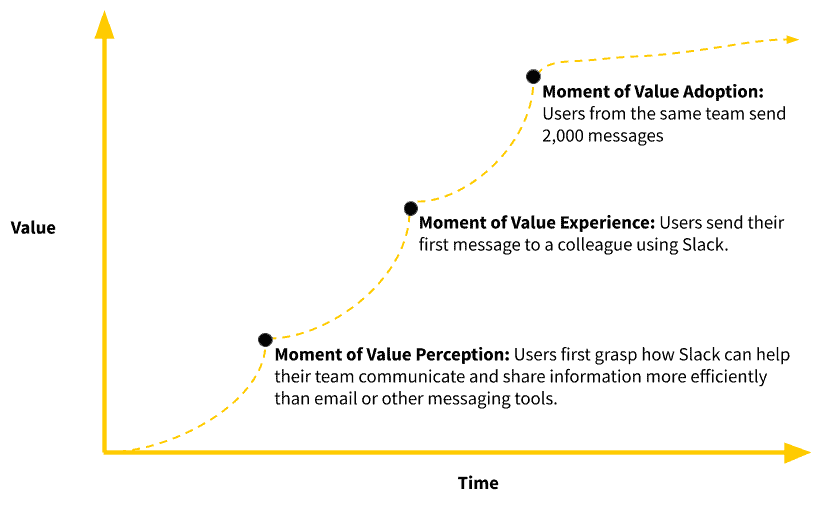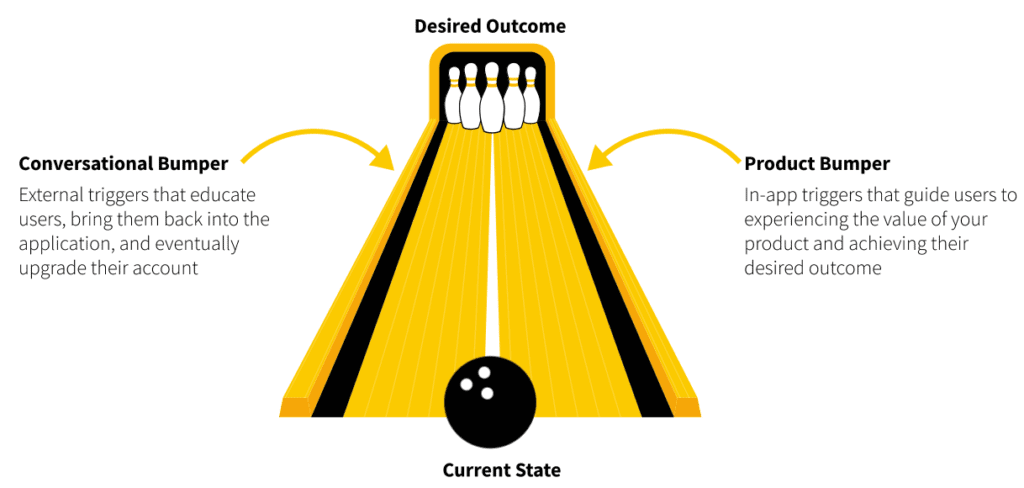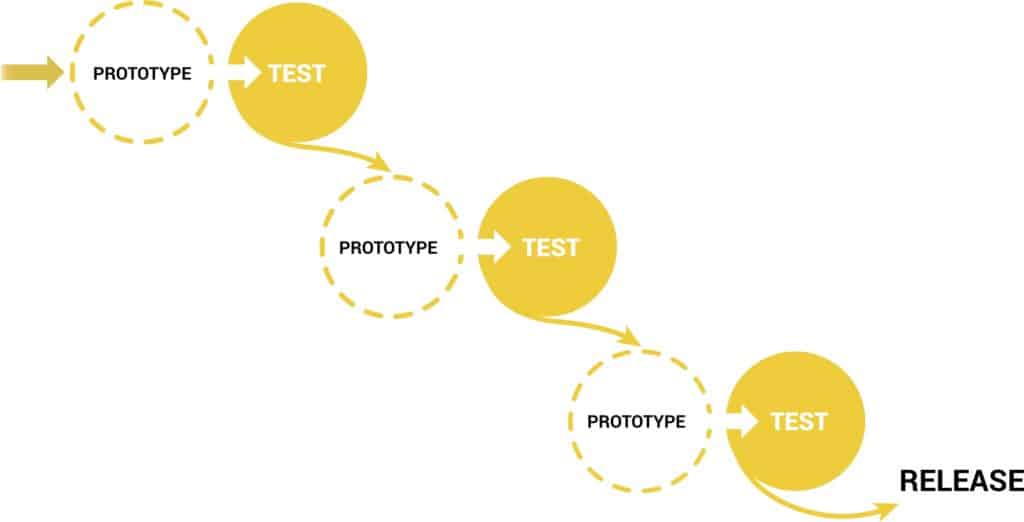This is an excerpt of a new book I’ve written with Wes Bush called Product-Led Onboarding™: How to Turn New Users into Lifelong Customers. In it, I cover each step of the EUREKA framework in detail. I also provide worksheets that you can download for free. You can buy it now.
Think back to the last time you discovered a software product when that incredible realization washed over you: life is never going to be the same again.
It felt like you just gained an exciting new superpower. Tasks that were once hard or tedious are now easier, cheaper, faster… better.
For me, this happened when I discovered Calendly for the first time, an app for scheduling meetings.
Gone were the days of checking my calendar multiple times to figure out when I’m available.
No more having to go back and forth with colleagues, clients, or podcast guests through email to decide on the best time for an appointment.
No longer did I need to send three different availabilities or adjust my schedule to fit various time zones.
It’s... magic.
The Cost of Neglecting User Onboarding
Unfortunately for most software products, this experience is anything but seamless. The signup and onboarding flow for new users are often afterthoughts to the “core” features of the software. The product team is preoccupied with releasing new features, while the marketing and sales teams are consumed with acquiring more customers.
Everyone is busy, so most new users fall through the cracks; for most software products, 40% to 60% of users will sign up once and never come back.
When a product’s onboarding is neglected, it’s like throwing a massive party with balloons, fireworks, and a bouncy castle in your backyard, yet no one can get past the front door. It’s a waste of time and resources for everyone involved:
- The product team may have spent days and hours planning and building the most exciting party in town.
- The marketing team may have spent ad dollars to promote it.
- The sales team may have focused their time and energy on providing a customized party experience to everyone invited.
The irony in all of this is that the user onboarding is usually the only aspect of a product that every single user will experience, including those who decide it isn’t right for them.
So, the million-dollar question is: are you wasting the investment in the marketing, sales, and product teams with an experience that neglects the needs of first-time users? Or are you honoring that investment with a seamless first product experience?
You can’t afford to neglect your user onboarding experience; your product’s success depends on it. Get it right, and new users will quickly experience the value of a product. In the end, they experience a “Eureka!” moment and embrace the product into their lives and become raving fans.
On the other hand, if you get onboarding wrong, it’ll have a snowball effect on growth, including user retention, revenue growth, and customer acquisition cost.
Process over Prescription
So, how do you improve a product’s user onboarding?
To make it very simple, I could give you a list of best practices and attributes of bad versus good onboarding, like below:
But adopting the wrong best practice could do more harm than good. Being too prescriptive dismisses how unique a product, market, team, and users are.
For example, some users love heavy-handed product tours, while others find it annoying. Some might feel overwhelmed with too many onboarding emails, while others might want more tips and resources.
Instead of explaining what you should and should not do with user onboarding, my goal is to provide a framework and process to help your users perceive, experience, and adopt your product.
The EUREKA Framework
At ProductLed, we’ve worked with hundreds of product-led companies like Mixpanel, Ubisoft, Outsystems, and more to improve their user onboarding experience. As a result, we’ve developed a simple but effective six-step framework that delivers an exceptional first impression. It ensures every new user experiences the true value of your product, shaping them to be happy customers for years to come.
The EUREKA framework is an acronym for each step in our process to improve user onboarding.
1) Establish an onboarding team
To deliver an effective, immersive, and seamless onboarding experience for new users, your approach needs to be collaborative across functions and departments. Onboarding can't just be quilted together from the work of different teams. It must be holistic. If it's not, users will receive a fractured experience. You have to form an onboarding ‘A’ team.
2) Understand the users’ desired outcome
The best way to successfully onboard new users is to figure out why they signed up in the first place. Particularly, you need to know what value means to users and understand the forces that influence them to adopt a new product.
3) Refine your onboarding success milestones
Your team needs a clear picture of what it means to successfully onboard new users. There are three moments that matter the most to measure onboarding success:
- When users complete the signup process.
- When users experience the value of a product for the first time.
- When they begin to use it consistently.
These three success criteria are tied to key milestones in the user onboarding: the Moment of Value Perception, Moment of Value Experience, and Moment of Value Adoption.

4) Evaluate the new users’ journey
To minimize the time it takes for new users to experience a product’s value, you have to map out the user’s journey to discover which steps should be delayed or eliminated. That’s where Wes Bush’s Bowling Alley Framework comes in. It provides a step-by-step process to identify the minimum number of steps to get users to experience the product’s value.

5) Keep new users engaged
To help guide new users to experience a product’s value, consider using triggers both inside and outside of the product. These could include product tours, welcome messages, progress bars, onboarding emails, SMS, and in-app notifications.
Ultimately, you’re not onboarding people to a product. You're onboarding them to a new way of accomplishing something, a new way of life. In essence, it’s a behavioral switch for users. They have to let go of their old habits and adopt new ones.
If users are falling off during the user onboarding, the BJ Fogg Behavior Model provides a framework to boost those numbers:
- Is the new behavior as easy to do?
- Are users motivated to perform the behavior?
- Are there prompts inside and outside the product to help users perform the desired behavior to complete the user onboarding?
6) Apply the changes and repeat
User onboarding is a continuous process.
multiple iterations usually beat a commitment to the first idea and making it work. It’s best to learn by doing.
This is an important principle to apply to user onboarding. From my experience, most teams do big launches to improve their user onboarding. Then, they iterate just once or twice a year. It’s much better to analyze the results, reiterate and implement changes quickly than to overthink and strategize about it for months.

Product-Led Onboarding™
This is an excerpt of a new book I’ve written with Wes Bush called Product-Led Onboarding™: how to turn new users into lifelong customers. In it, I cover each step of the EUREKA framework in detail. I also provide worksheets that you can download for free.





